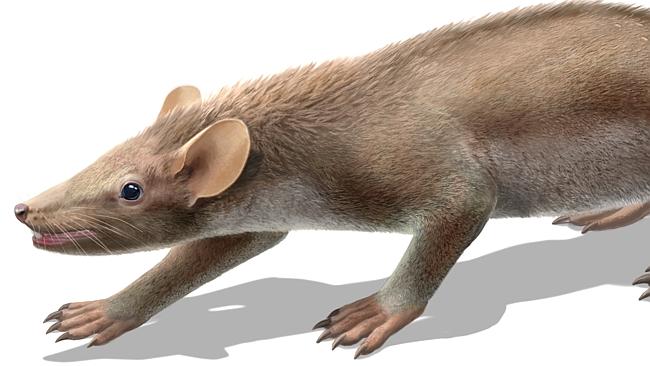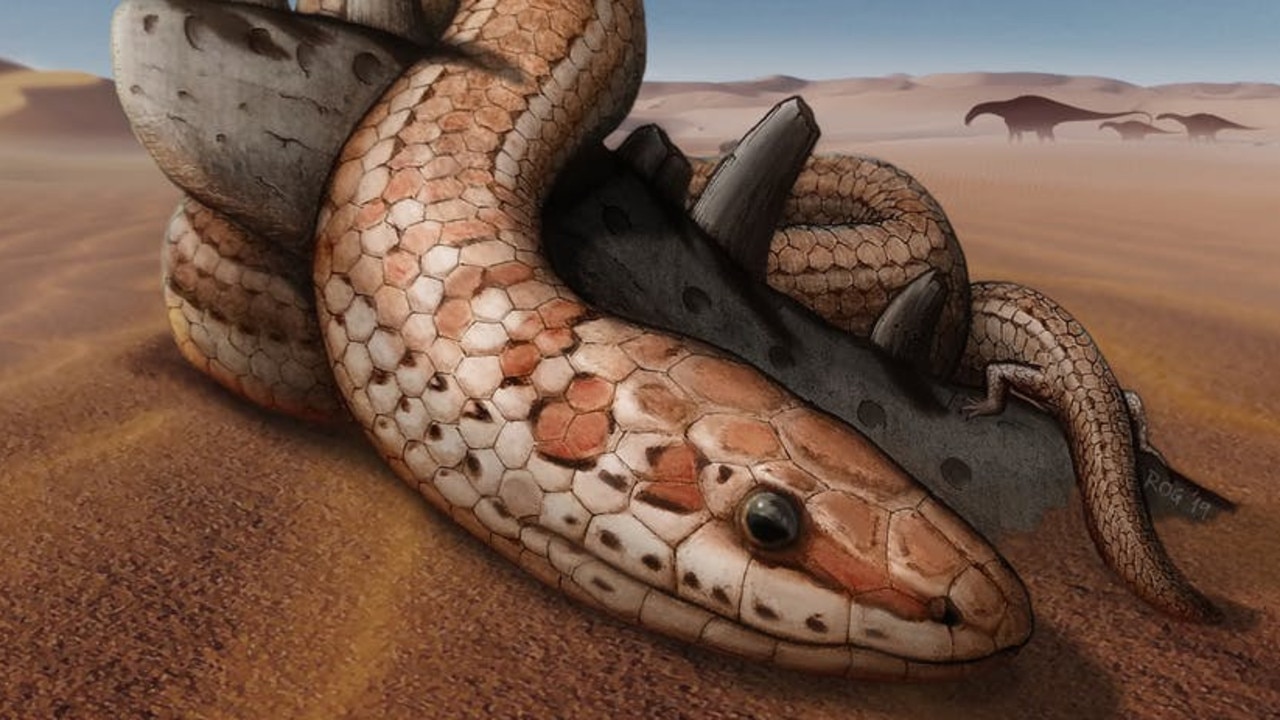Pre-historic rat-like critter that roamed with the dinosaurs found intact
IT’S older than the dinosaur and just as creepy as the rats of today — except this prehistoric critter had enormous strength where you wouldn’t expect.

A PREHISTORIC rat-like critter that scampered between the feet of dinosaurs more than 125 million years ago has been so well preserved its fur, skin and some organs are still intact.
The fossilised remains of the “spinolestes” — a combination of rat, hedgehog and armadillo — contain by far the oldest remnants of hair ever discovered, proving that furry critters coexisted with the dinosaurs.
The remains, unearthed in a quarry near Cuenca in central Spain, are more than 60 million years older than other fossils that record the soft tissues of prehistoric mammals.
Reporting on the fossil in the journal Nature, scientists said it had the oldest mammal liver and lungs ever found, as well as the most detailed examples yet of hair and fur in its class.
The animal belonged to an extinct species known as triconodonts and grew hair like modern mammals, according to a study released this week.
The fossil also boasted an intact earlobe and diaphragm muscle — and showed mammalian evolution was well advanced long before the dinosaurs met their end.
“This furball ... displays the entire structural diversity of modern mammalian skin and hairs,” University of Chicago researcher and study co-author Zhe-Xi Luo, said.
Previous research has turned up evidence of hairs that date back 165 million years, but they were only fossilised impressions and lacked the detail of this new discovery.
The creature’s fur and liver were visible with the naked eye, but a microscope was needed to see the intricate structures of the lung.
Spinolestes xenarthrosus — from the Latin for spiny — had remarkably modern features: multiple hairs coming from the same pore, and spines on its back similar to those on a hedgehog.
“We now have conclusive evidence that many fundamental mammalian characteristics were already well-established some 125 million years ago, in the age of dinosaurs,” Luo said.
The 24cm long and roughly 70g critter also had some curious stumpy hairs on its back that researchers interpreted as evidence of dermatophytosis, a contagious, itchy skin infection commonly known as ringworm.
The Spinolestes xenarthrosus was so perfectly frozen in time because it was likely fossilised within hours of its death in what was then a lush wetland in central Spain, study co-author Thomas Martin, a scientist at the University of Bonn in Germany, said.
That area is now Las Hoyas quarry, which has produced hundreds of fossils, including scientifically important ones of birds and dinosaurs.
Mr Luo told AFP a research team member working there in July 2011 spotted the fossilised remains.
Researchers also found the earliest known example of a mammal ear in the Spinolestes xenarthrosus fossil, along with platelike structures called scutes that can be seen on modern-day armadillos.
Based on the fossil, the team concluded it had features in its spine that gave it an extraordinarily strong back.
Researchers believed it was a ground dweller that lived on insects, and speculated its powerful spine might have helped it push apart logs or branches while in search of a meal.




